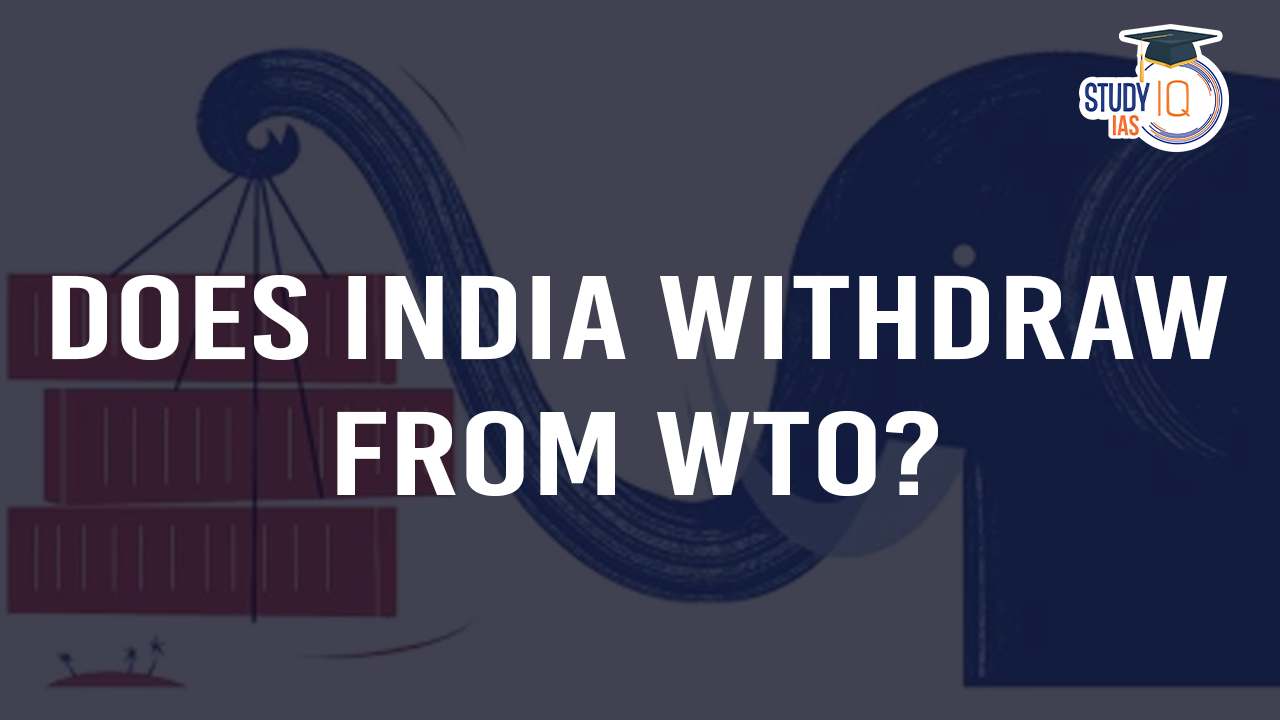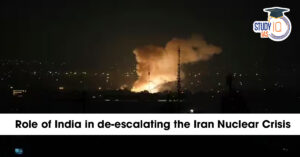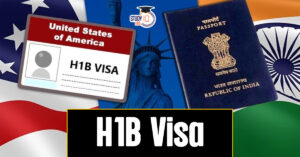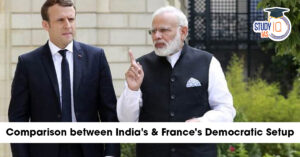Table of Contents
Context: A recurring demand from a section of Indian farmers is that India should exit the World Trade Organisation (WTO).
Why Are Indian Farmers Demanding Exit from WTO?
Limits on Minimum Support Price (MSP) & Subsidies
- WTO’s Agreement on Agriculture (AoA) restricts India’s MSP and other support to farmers.
- The External Reference Price (ERP), fixed based on 1986-88 prices– only 10% of the total value of agricultural production as subsidies, does not account for inflation, making India’s MSP seem excessive in World Trade Organisation (WTO) calculations.
- Farmers believe these restrictions hinder their right to secure a legal guarantee for MSP.
Threat from Cheap Imports
- WTO promotes free trade, leading to the import of cheaper agricultural goods from developed countries.
- Eg., India faces cheap dairy imports from New Zealand and oilseeds from Argentina, which harm domestic producers.
Lack of Fair Market Access for Indian Exports
- Developed nations impose non-tariff barriers (e.g., strict quality standards, and sanitary measures) that restrict Indian agricultural exports.
- India struggles to export products like rice, wheat, and dairy due to such restrictions.
Developed Countries’ Unfair Subsidies
- The U.S. and EU heavily subsidize their farmers (U.S. farm subsidies exceed $100 billion annually).
- This makes their agricultural products artificially cheaper, reducing the competitiveness of Indian exports.
- India cannot match these subsidy levels due to WTO’s trade-distorting subsidy caps.
Restrictions on Public Stockholding for Food Security
- India maintains food stocks for welfare programs like the Public Distribution System (PDS).
- WTO rules limit food stockpiling beyond a certain level, calling it a trade distortion.
- This creates challenges for India’s food security and buffer stock programs.
Lack of Progress on “Special & Differential Treatment” (S&DT)
- WTO promised special treatment for developing countries, allowing them to protect farmers.
- However, developed countries block these reforms while enjoying policy flexibility for their own farmers.
What Can India Do Instead of Exiting the WTO?
Utilize WTO’s “Peace Clause” Effectively
- The peace clause protects India from legal action even if it exceeds subsidy limits for food security programs.
- India should continue using this clause to provide MSP and stockpile food grains while negotiating for permanent relief.
Advocate for Reforming the External Reference Price (ERP)
- India should push for updating the ERP from the outdated 1986-88 levels to current inflation-adjusted values.
- This would make India’s MSP more justifiable under WTO norms.
Increase Non-Trade-Distorting Support
- Instead of relying solely on MSP, India can expand direct income support schemes like PM-KISAN, which are WTO-compliant.
- Other investment-based incentives (e.g., irrigation infrastructure, crop insurance) can also be strengthened without violating WTO rules.
Strengthen Tariff and Non-Tariff Barriers on Imports
- India should strategically use tariff and non-tariff measures to curb excessive agricultural imports harming domestic farmers.
- Sanitary and Phytosanitary (SPS) measures can be used to set higher quality standards, restricting unfair imports.
Secure Bilateral and Regional Trade Deals
- India should negotiate fairer Free Trade Agreements (FTAs) to reduce dependence on WTO-led global trade rules.
- Eg., The India-UAE CEPA (Comprehensive Economic Partnership Agreement) ensures better export opportunities for Indian agricultural goods.
Strengthen WTO Negotiations Rather Than Exiting
- India should lead coalitions of developing nations to push for fairer agricultural trade policies.
- Strengthening multilateralism instead of exiting will help India shape global trade rules in its favor.


 Iran Nuclear Crisis and India’s Role f...
Iran Nuclear Crisis and India’s Role f...
 H1B Visa Program, Beneficiaries, Eligibi...
H1B Visa Program, Beneficiaries, Eligibi...
 Comparison Between India & France's ...
Comparison Between India & France's ...

























